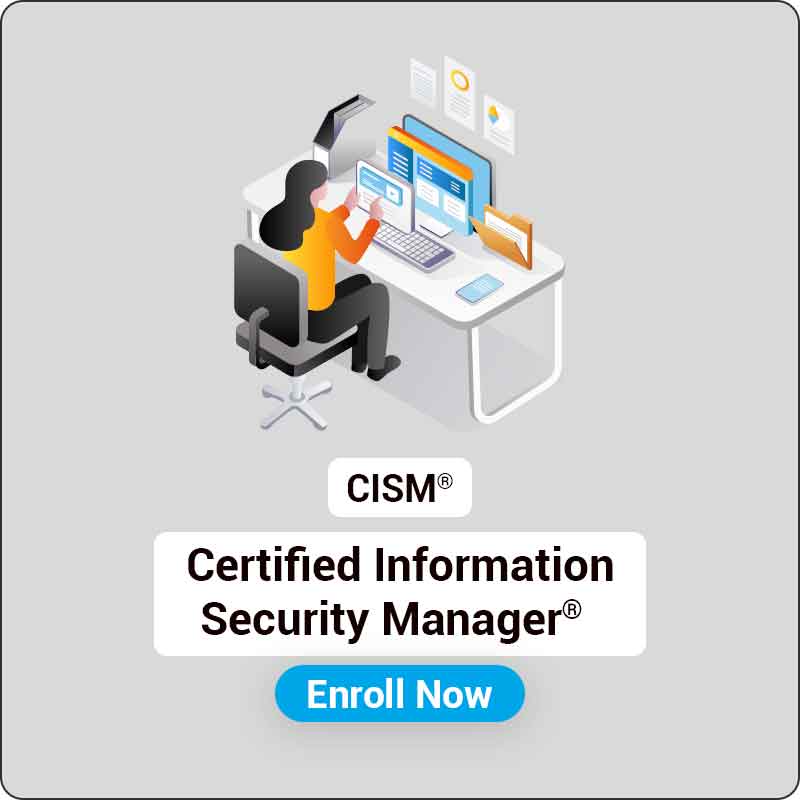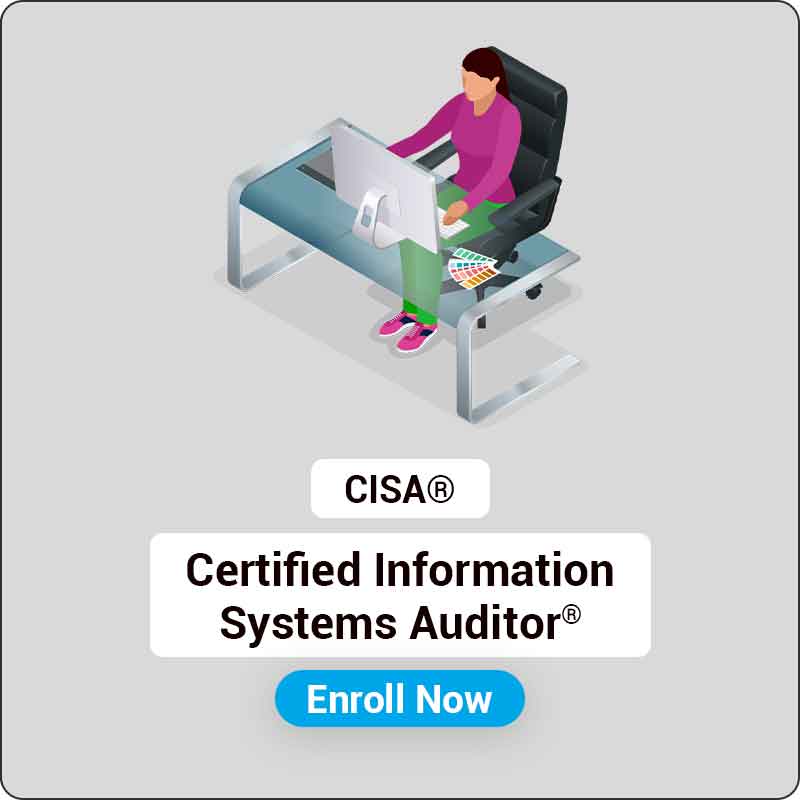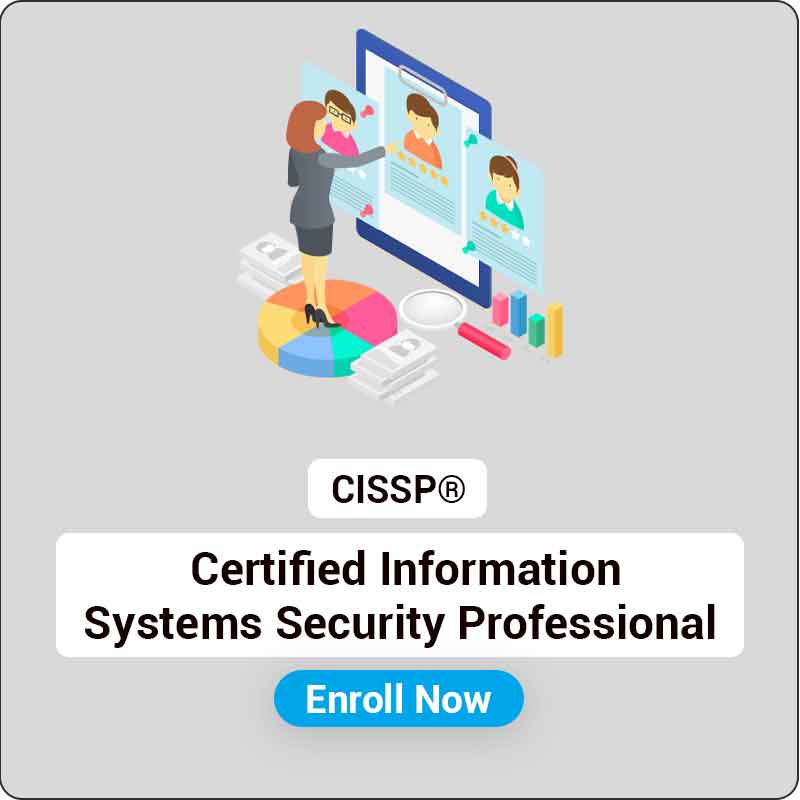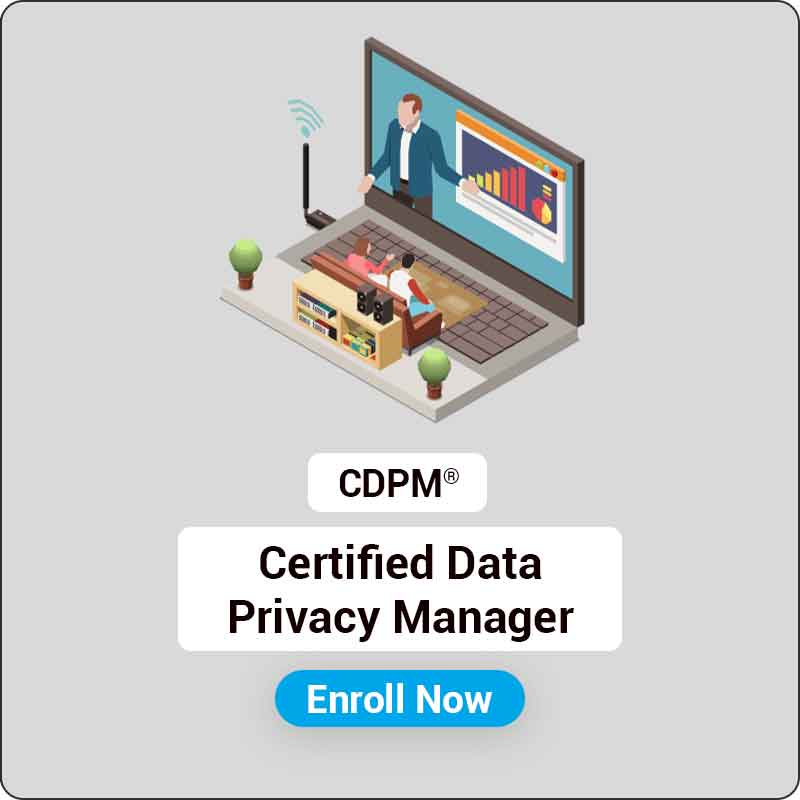Certified Information Systems Security Professional (CISSP)
Virtual Classroom
Training
Training
Practice Questions
on LMS
on LMS
Guaranteed to
Run Batches
Run Batches
Experienced
Instructors
Instructors
Exam
Simulation
Simulation
Post-Training
Support
Support
Virtual Classroom
Training
Training
Practice Questions
on LMS
on LMS
Guaranteed to
Run Batches
Run Batches
Experienced
Instructors
Instructors
Exam
Simulation
Simulation
Post-Training
Support
Support
CISSP Training
$479
$600
i
-
✓
Training Material
-
✓
Instructor-Led Virtual Classroom Training
Target Audience
Pre-Requisites
Exam Information
FAQ
✓ Network architects
✓ Security consultants
✓ Security architects
✓ Security auditor
✓ Security managers
✓ CIOs
✓ directory of security
✓ Security analysts
✓ Security systems engineers are just a few of the job roles that can enroll in CISSP training.
✓ Anyone looking to pass their CISSP Certification Exam can also enroll in CISSP training.
✓ Candidates with at least 5 years of work experience in two or more of the eight domains listed by ISC2 in their CISSP Common Body of Knowledge (CBK) are eligible to enroll in the Certified Information Systems Security Professional (CISSP) training program.
✓ If the candidate holds a 4-year college degree or another certification credential from the list of ISC2 authorized courses, the requisite 5-year experience might be waived for one year.
✓ CISSP CAT Exam Format (Only in English)
✓ Exam Name : Certified Information Systems Security Professional (CISSP)
✓ Exam Format : Multiple Choice, Computerized Adaptive Testing (CAT)
✓ Total Questions : 150 Questions
✓ Passing Score : 700 out of 1000
✓ Exam Duration : 180 Minutes
✓ Languages : English
✓ Testing Center : Pearson Vue
Live Classroom
Learning On-Demand
Corporate Training Solutions
Advance your career with Knowlathon’s Live Instructor-Led/Classroom Training, designed for professionals who prefer interactive and structured learning.
Gain practical insights, real-time engagement, and expert guidance to confidently clear certification.
✓ 5 Days Live Training by Certified Experts.
✓ Interactive Sessions with Real-Time Q&A & Case Studies.
✓ Comprehensive Study Material + Post-Session Recordings.
✓ Learner Support to Guide You Every Step.
Learn at your own pace with Knowlathon’s On-Demand Training Programs - ideal for busy professionals who need flexibility without compromising quality.
✓ Comprehensive Learning Material Featuring Real-World Business Scenarios.
✓ Study Training Material + Exam Voucher.
✓ Access to Self-Paced Resources (for On-Demand Learners)
✓ Learner Support from Our Expert Team.
Help your teams grow with personalized training programs and affordable pricing that fit your business goals. Build a future-ready workforce by boosting digital skills, technical know-how, and a mindset of continuous improvement.
✓ Scalable Learning Programs for Teams of Any Size
✓ Dedicated Customer Success Manager & Post-Training Support
✓ Cost-Effective Exam Voucher Packages.
Frequently Asked Questions
🔹What is CISSP®?
+
CISSP® (Certified Information Systems Security Professional) is a globally respected certification from (ISC2), validating your skills and knowledge across key cybersecurity domains. It is considered the gold standard for professionals who lead security programs.
🔹What will I learn in the CISSP® course?
+
You’ll master all eight domains of the CISSP® Common Body of Knowledge (CBK), including Security and Risk Management, Asset Security, Security Architecture and Engineering, and more. The course equips you to protect enterprise assets, manage risk, and support secure system operations.
🔹Why should I get CISSP® certified?
+
CISSP® certification is a hallmark of excellence in cybersecurity. It positions you as a knowledgeable, experienced, and committed security professional, opening doors to senior roles and higher salaries in the global IT and cybersecurity landscape.








.jpg)





